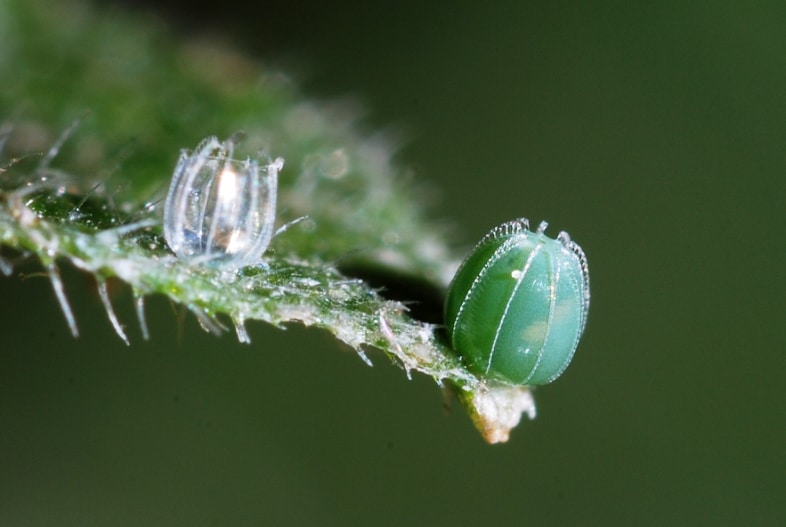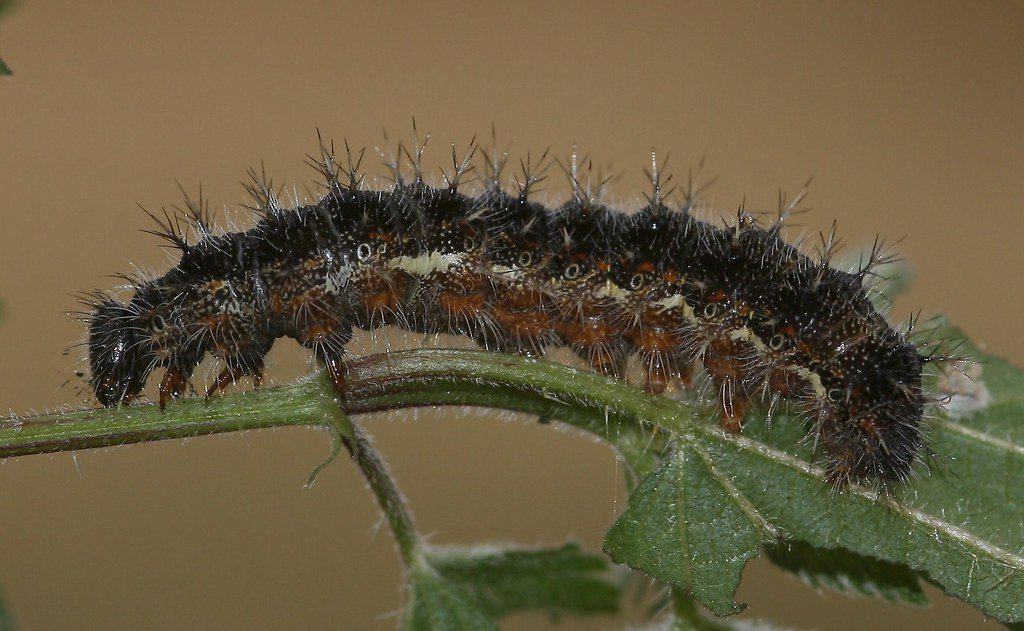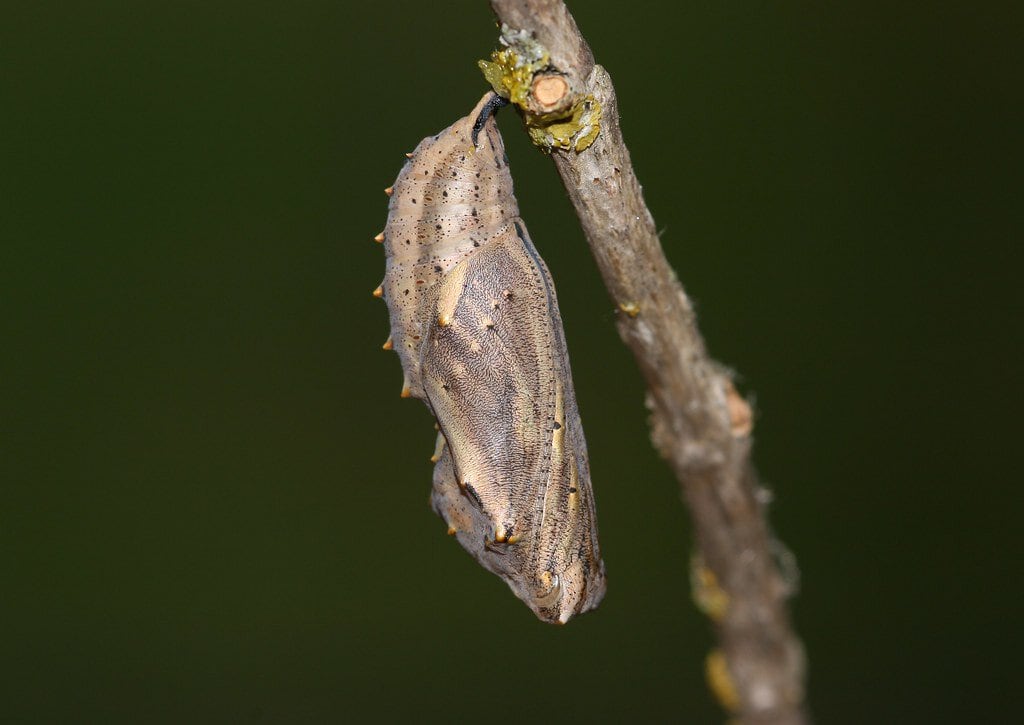Jump to:
The Painted Lady Butterfly graces our landscapes with its exquisite beauty. You might even find one visiting your greenhouse garden! With its scientific name, Vanessa Cardui, this butterfly goes by many monikers. Yet, its allure remains constant.
In this exploration, we will unveil the captivating behaviour of this winged wonder. From there, we’ll also delve into the stages of its life, from the eggs to the chrysalis. Join us as we learn every stage of its existence!
Behaviour

(Image Credit: Wikimedia Commons)
The Painted Lady Butterfly is known for its gentle demeanour. It can be found gracefully fluttering in a variety of habitats, from gardens to meadows. In a number of instances, you may find them enjoying nectar in your wooden greenhouse.
With an affinity for nectar-rich flowers, it plays an essential role as a pollinator. Meaning it aids in the reproduction of countless plant species. Moreover, this butterfly is remarkably adaptable. It showcases its vibrant wings and agile flight in urban and rural environments.
Migratory patterns and ecosystem role
Fascinatingly, the Painted Lady undertakes remarkable migrations, spanning thousands of miles across continents. Seasonal changes drive these migrations. And they contribute to the dispersion of genetic diversity.
In the ecosystem, their interactions with plants and other pollinators form intricate connections. This fosters biodiversity and supports the health of various ecosystems.
The Egg Stage

(Image Credit: Wikimedia Commons)
At the onset of this butterfly’s life cycle, the journey begins with a minuscule yet pivotal form: the egg. These tiny orbs hold within them the promise of transformation. And they set the stage for the remarkable metamorphosis that followed.
Egg appearance and selection
The eggs are a pale greenish hue, about the size of a pinhead, and are laid singly on the leaves of host plants. The female butterfly is discerning in her choice of host plants. Often, she selects those that will provide the most nourishment for her offspring. These chosen plants typically belong to the thistle and aster families. They serve as essential sustenance for the developing caterpillars.
Protective strategies
Safeguarding the eggs from potential predators, such as insects and birds, is crucial. Usually, the female butterfly strategically places them on the undersides of leaves. In some cases, within the shelter of plant foliage. This cryptic positioning reduces their visibility. Moreover, this increases the likelihood of the eggs successfully reaching the next stage.
The Larva Stage

As the Painted Lady Butterfly’s life cycle unfolds, the caterpillar emerges. Acting as the central player, it embodies the stage of rapid growth and development.
Distinct physical characteristics
The caterpillar boasts a striking appearance. Adorned with alternating bands of black, yellow, and white, resembling a tiny bumblebee. Its cylindrical body is covered in tiny, bristle-like hairs that add to its unique texture.
Feeding habits and host plants
The caterpillar primarily feeds on the leaves of its chosen host plants. These include thistles and asters, to name a few. Such greens provide the necessary nutrients for its transformation. They also contribute to the butterfly’s striking colours later on.
The Pupa Stage

Within the cocoon of the pupa stage lies the period of a profound transformation.
Chrysalis appearance and protection
The chrysalis appears mottled and earth-toned, often resembling a dried leaf or twig. This camouflage provides essential protection against predators, blending seamlessly into the environment.
Metamorphosis unveiled
Inside the chrysalis, a remarkable process unfolds. The caterpillar’s body breaks down into a nutritive soup-like substance. This is a necessary precursor to its rebirth.
From this biological alchemy, the adult butterfly takes form. It then begins to develop wings, legs, and intricate patterns.
Note: The chrysalis showcases fascinating variations in colour and patterns. This can depend on the species and local conditions.
Remarkable moulting behaviour
During its journey from larva to pupa, the caterpillar undergoes several moults. From here, it sheds its old skin to accommodate its expanding body. This process symbolises growth and the shedding of past limitations. It prepares the caterpillar for its eventual metamorphosis into the butterfly it is destined to become.
Fun Facts

- The Painted Lady boasts one of the widest ranges of any butterfly. It spans across North America, Europe, Asia, and Africa.
- Their migratory journey is awe-inspiring. They cover thousands of miles and showcase the marvel of long-distance flight.
- Across cultures, this butterfly symbolises change, transformation, and renewal. This mirrors its lifecycle’s profound shifts.
- In gardens (including greenhouse buildings) and educational settings, these butterflies captivate onlookers. For one, they offer a firsthand glimpse into the magic of metamorphosis.
Round-up
The Painted Lady Butterfly’s life cycle weaves a tale of:
- remarkable resilience
- beauty
- and transformation
From the delicate eggs to the cryptic chrysalis, this journey shows nature’s artistry. Whether observed in gardens or the wild, the Painted Lady’s story resonates as proof of the cycles of change. Moreover, to the enduring wonder that nature graciously bestows upon us.
Keen on luring these delicate flyers to your garden greenhouse? Ensure the perfect setup with suitable housing. And, of course, a selection of prime pollinator plants! These blooms flourish ideally within a well-ventilated wooden growhouse. Even a polycarbonate greenhouse kit can create an inviting haven for them.
What you should read next: How to Start a Garden Greenhouse





